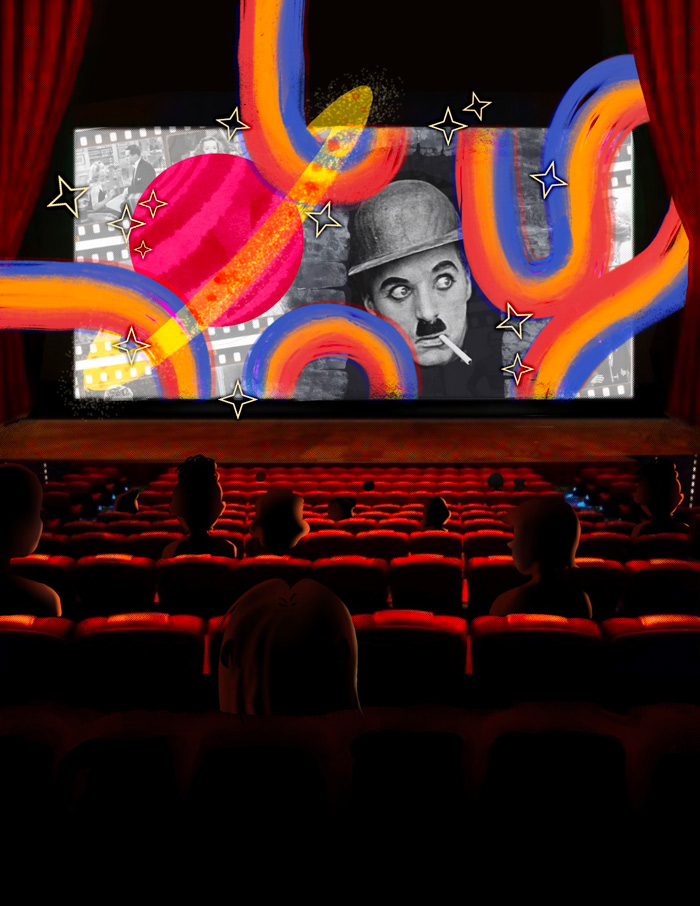by Izaak Garcia
The development of the “cinema of attractions,” a concept in filmmaking that emerged in the early 20th century, is one of the most influential ideas in the history of cinema and has long permeated the art of making films. From the very start of the production of films, the goal was to not only make something outside the contemporary boundaries of current art, but to appeal to the people who would want to see it as well. With this relationship of making art and wanting people to see it, film was allowed to flourish into something that could be experimented with and ultimately changed for the better.
So, what exactly is the cinema of attractions? Conceptually, the cinema of attractions uses vivid imagery on screen to delight and entrance audiences, prioritizing these things instead of the story or plot of the film. In the early 1900s, when films were just starting to grace a bigger screen and bring in large crowds, filmmakers wanted to draw even more people to the cinema to see the spectacle that they had created on screen. Once that was accomplished, even more importantly, filmmakers needed a way for audiences to keep coming back. This birthed what filmmakers now call the cinema of attractions. It is the reason why A Trip to the Moon, made in 1902 and directed by George Melies, was not only popular for audiences to view, but also laid the groundwork for films that were to be made in the future. A Trip to the Moon showed the audience that the limits of what you could see on screen were endless. Audiences could lose themselves in a fantastical world without having to worry about the consequences of leaving their current one. The exploits of the characters within the film were not so much created to develop the individuality of their own stories and backgrounds but to engage with the audience viewing their journey. This is ultimately the goal of the cinema of attractions and is what keeps the audience wanting more from the art form.
While the cinema of attractions may have found its origins in the early 1900s, the concept is still quite prevalent today. Spectacles made by filmmakers keep growing in complexity, and they are still viewed by audiences with awe. Two good contemporary examples of this would be James Cameron’s Avatar and Avatar: The Way of Water. CGI and visual effects alone would categorize these films within the realm of the cinema of attractions. Even though both movies have involved storylines and character development, the unique and striking images that are created with special effects are what draw audiences to see the films. Audiences will always come to the theater if they know that what they are about to see has never been seen before. It is what attracts people to the cinema and always will.
About Izaak Garcia

Izaak Garcia is currently a freshman at the University of Southern California, majoring in Cinema and Media Studies with a minor in Applied Cybersecurity. He has played soccer with FC Peoria, Dunlap, and Richwoods for over a decade combined. Garcia has also played tennis for 4 years, securing a spot on both junior varsity and varsity teams. Along with this, he has competed with the Richwoods Worldwide Youth Science and Engineering team for Biology and English for 2 years and earned multiple awards for the school. Garcia is also heavily involved with the arts. As a multi-instrumentalist, he has played the saxophone for 8 years and piano for 2 years. During his junior year of high school, he was involved in theater at Richwoods as stage crew and manager. He helped with two productions and was being trained to be stage manager for senior year before the COVID-19 pandemic impacted school. Outside of school activities, Garcia is involved in Jack and Jill of America (an organization for young African American men and women to serve the community). He served as his chapter’s treasurer during his freshman year of high school. Along with Jack and Jill of America, he enjoys coding, learning new languages, and playing video games.
Art by Aryanne Westfall

Ary Westfall is a junior Interactive Media major and Theatre Arts minor attending Bradley University. She is the social media manager for DAT, creates webcomics in her free time, and enjoys all forms of sequential art. Ary hopes to break into the comic world or find work in pre-production art for television.

